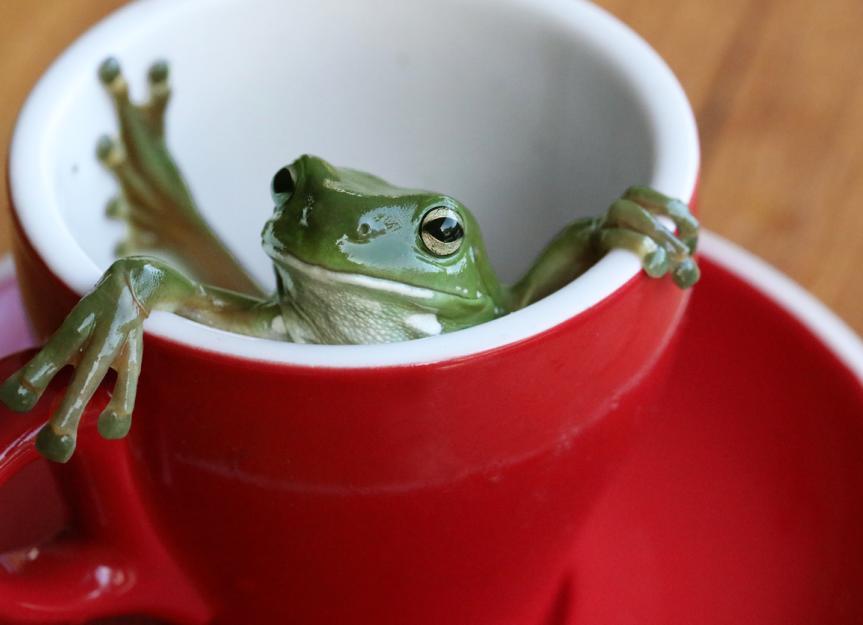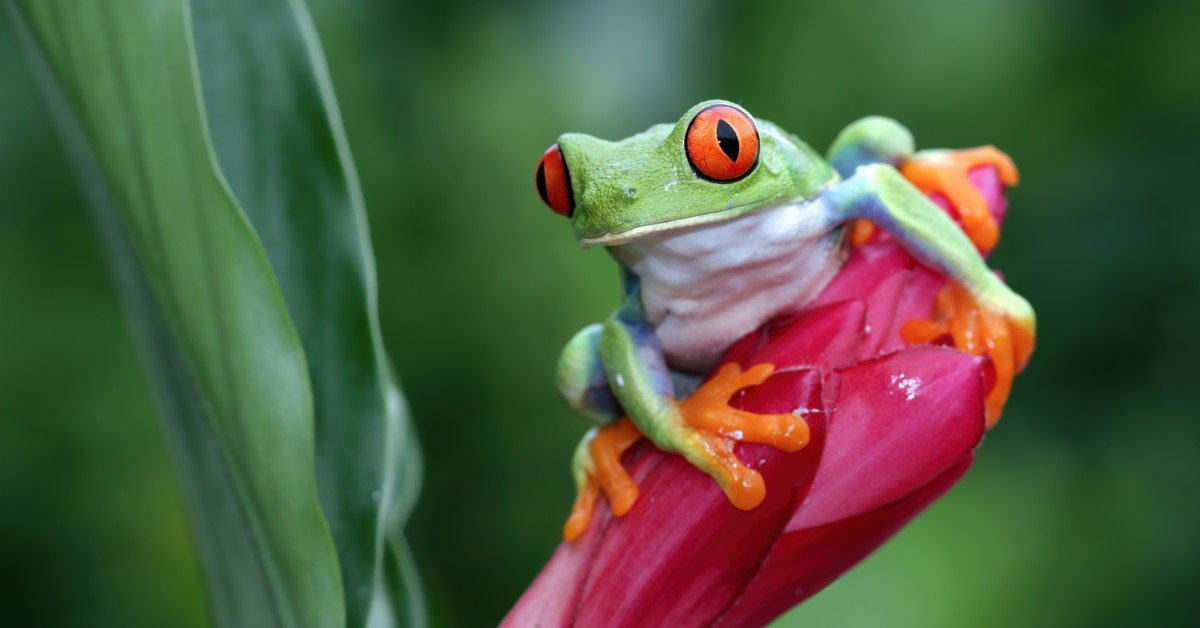Pet frogs eat a variety of live insects and small invertebrates as their primary diet. Frogs kept as pets have specific dietary needs that require a combination of live insects and invertebrates.
These small creatures provide essential nutrients and vitamins that contribute to the overall health and well-being of the frog. While there are commercially available frog food options, most experts recommend varying the diet by offering a range of live prey such as crickets, mealworms, waxworms, and even small feeder fish.
It is crucial to ensure that the insects are appropriately sized for the frog and that they are gut-loaded, meaning they have been fed a nutritious diet before being offered to the frog. Adequate nutrition is vital for pet frogs to thrive and maintain a healthy lifestyle.
Understanding A Frog’s Diet
Frogs are fascinating creatures with diverse dietary needs. Understanding their diet is essential for their overall well-being. While some frogs are herbivores, others are carnivores or omnivores. Herbivorous frogs primarily feed on plants, including various types of algae, grasses, and leaves. Carnivorous frogs, on the other hand, rely on a diet of small insects, spiders, and sometimes even small vertebrates like mice or other frogs. Omnivorous frogs have a versatile diet that incorporates both plants and small prey.
Regardless of their specific dietary preferences, all frogs require certain essential nutrients to thrive. These include proteins, fats, carbohydrates, vitamins, minerals, and water. Proteins are crucial for muscle development and growth, while fats provide energy and aid in maintaining healthy body temperatures. Carbohydrates serve as a source of immediate energy, while vitamins and minerals play vital roles in various physiological processes. It is also important to note that frogs obtain a significant amount of their water intake through their skin, as well as by consuming moisture-rich foods and drinking from their habitat.
Essential Food Sources For Pet Frogs
The importance of live prey for a varied and natural diet:
Pet frogs thrive on a diet that closely resembles what they would consume in the wild. Including live prey in their meals ensures a varied and natural diet, providing essential nutrients and mental stimulation. Live prey can mimic the hunting experience, encouraging physical activity and maintaining the frog’s instincts.
Finding the ideal balance between commercial and live food:
While commercial food may be convenient, relying solely on it can lead to nutritional deficiencies. Combining it with live food options is crucial to meet the dietary requirements of pet frogs. This ensures they receive a well-rounded meal that includes essential vitamins and minerals.
Insects: The staple food for carnivorous and omnivorous frogs:
Carnivorous and omnivorous frogs primarily feed on insects. Crickets, locusts, and roaches are commonly available options that provide high protein content. These insects also offer the opportunity for frogs to exhibit natural hunting behaviors, promoting physical and mental exercise.
Worms and grubs: Nutrient-rich options for frogs of all types:
Worms and grubs are excellent sources of nutrition for frogs. Earthworms, mealworms, and waxworms provide essential nutrients like calcium, vitamins, and minerals. They offer a softer texture, making them suitable for smaller or delicate frog species.
Small fish and tadpoles: A potential protein source for certain frog species:
Some frog species, such as African dwarf frogs, benefit from small fish and tadpoles in their diet. These aquatic options provide a rich protein source and resemble natural prey. However, it is important to consider the compatibility and size differences when introducing fish or tadpoles to a pet frog’s enclosure.
Offering A Balanced Diet To Your Pet Frog
Offering a balanced diet is crucial for keeping your pet frog healthy and happy. In addition to their main diet of live insects, it is important to supplement their diet with fruits and vegetables. This is a great way to provide variety and essential nutrients for their overall well-being.
Gut-loading and dusting prey items are also important practices to ensure your frog is getting the necessary nutrients. Gut-loading involves feeding the insects a nutritious diet before feeding them to your frog. This ensures that the prey items are packed with essential vitamins and minerals.
Furthermore, dusting the prey items with calcium and vitamin supplements is essential. This helps to meet the calcium and vitamin requirements of your pet frog, as these nutrients are often lacking in their natural diet. Dusting the prey items is an effective way to ensure your frog is getting all the necessary nutrients.
Avoiding Harmful Foods And Hazards
It is crucial to be mindful of the food we offer to our pet frogs. Certain foods can be toxic to frogs and should be avoided completely. Frogs have delicate digestive systems and feeding them harmful foods can have serious consequences. Some common foods that are toxic to frogs include insects treated with pesticides, toxic plants, and fruits and vegetables that contain high levels of toxins. It is important to always research and thoroughly wash any prey items before feeding them to your frogs to avoid potential choking hazards. Furthermore, overfeeding and underfeeding can also be harmful to frogs. Overfeeding can lead to obesity and various health issues, while underfeeding can result in malnutrition and stunted growth. Therefore, it is essential to establish a proper feeding schedule and provide a balanced diet for your pet frogs.
Promoting Healthy Eating Habits
Creating a suitable feeding environment: Ensuring that your pet frog has a comfortable and appropriate space to eat is essential for promoting healthy eating habits. Provide a clean and spacious habitat with hiding spots and foliage to mimic their natural environment. This will reduce stress and encourage natural feeding behaviors.
Establishing a regular feeding schedule: Consistency is key when it comes to feeding your pet frog. Set a routine that includes feeding at the same time each day. This will help your frog anticipate mealtime and establish a healthy eating pattern.
Monitoring your frog’s eating habits and adjusting as needed: Pay close attention to your frog’s eating habits to ensure they are getting the right amount and variety of food. Observe their appetite, digestion, and body condition to gauge if adjustments need to be made. Consider consulting with a veterinarian who specializes in exotic pets for guidance on proper nutrition.

Credit: www.petmd.com
Frequently Asked Questions Of What Pet Frogs Eat
What Do Pet Frogs Eat?
Pet frogs eat a variety of live insects such as crickets, mealworms, and fruit flies. Some frogs also eat small fish, snails, and worms. It’s important to provide a balanced diet to ensure proper nutrition for your pet frog.
Can Pet Frogs Eat Fruits And Vegetables?
Yes, some pet frogs can eat certain fruits and vegetables. However, it’s important to do research on the specific species of frog you have as their dietary needs can vary. Foods like bananas, apples, and leafy greens can be offered in small quantities.
How Often Should I Feed My Pet Frog?
The frequency of feeding your pet frog depends on its age and size. As a general rule of thumb, adult frogs are usually fed every 2 to 3 days, while younger frogs may require daily feedings. It’s important to monitor their weight and adjust the feeding schedule accordingly.
Can Pet Frogs Eat Dead Insects?
No, it’s not recommended to feed your pet frog dead insects. Frogs are more likely to eat live prey as it stimulates their natural hunting instincts. Live insects are also a good source of nutrients and hydration for your frog.
Conclusion
To sum up, understanding what pet frogs eat is essential for their overall health and well-being. By providing them with a balanced diet consisting of live insects, high-quality commercial frog food, and occasional fruits or vegetables, you can ensure that your pet frog receives the necessary nutrients for thriving.
Remember to always research and consult with experts to meet the specific dietary needs of your pet frog. Keeping them well-fed will contribute to their happiness, longevity, and enjoyment as a unique and fascinating pet.
